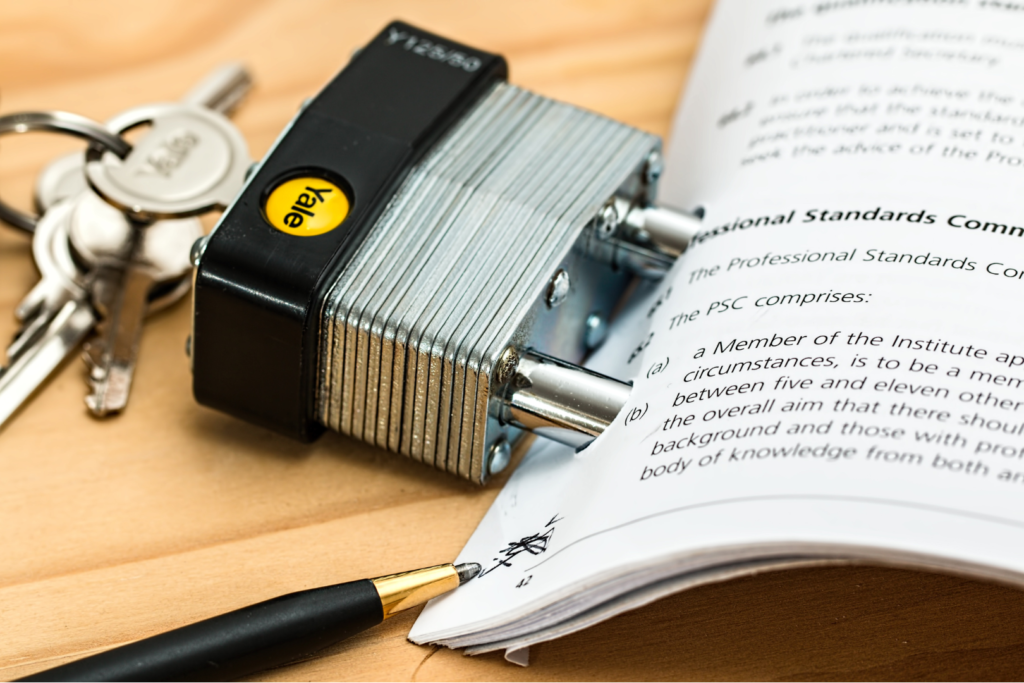What Makes an Electronic Signature Legally Binding?
Legally binding signatures make an agreement or transaction official once all parties have signed a document or contract, where this document can be upheld in court. This proof that an agreement exists is critical for businesses to support growth, prevent conflicts and ultimately mitigate risk — which rings true in both physical and electronic transactions. Legal binding signatures are as critical as effective transaction categorization for maintaining accurate records, enabling financial analysis, and ensuring compliance with standards and regulations.
Today, with the increasing use of the internet by consumers, businesses are significantly growing their online presence. And as a result, laws and regulations have been created worldwide to promote the legality of electronic documents and signatures.
With the global electronic signature market projected to grow to over $35 billion U.S. dollars by 2029, per a report from Statista, electronic signatures — enabling the fast and paperless signing of digital transactions — are here to stay. Read on to learn more about the full legal effect of electronic signatures and the advantages they can offer your business.
Understanding Electronic Signatures
Put simply, an electronic signature, also known as an e-signature, is a wet signature in electronic form, designed as a quick and easy way to sign an agreement. Contrary to popular belief, this typically refers to something more comprehensive than a scanned signature. And today, an e-signature can generally be assumed to hold the same legal weight as a handwritten signature.
What Constitutes an Electronic Signature?
According to the Federal Deposit Insurance Corporation, an e-signature is defined as “an electronic sound, symbol or process, attached to or logically associated with a contract or other record and executed or adopted by a person with the intent to sign the record.” This essentially validates an e-signature as long as the signing is tied to a contract or electronic record and intended to function as a signature.
While often appearing in the digital form of a traditional wet ink signature, an e-signature can also look like:
- Consenting to the terms and conditions of a website by clicking “I agree” or something similar.
- Typing your name into an online form.
- Signing your name on a mobile device with your finger.
For the most efficient results, organizations are increasingly implementing signature software, such as solutions from DottedSign. This provides a faster, simpler and more flexible way to sign documents remotely, across all your devices. But, can your business assume the resulting digital signatures are legally binding?
Are E-Signatures Legally Binding?
The exponential growth in electronic transactions and the use of electronic signatures have resulted in the creation of international laws that guarantee their enforceability. In other words, yes, e-signatures are undoubtedly legally binding — helping facilitate effective business for decades already. However, with subtle differences in regulation and legal frameworks, we’re taking a closer look at e-signature legislation in different regions across the globe.
United States
In the U.S., e-signatures are governed by the United States Electronic Signatures in Global and National Commerce Act (E-Sign Act), and the Uniform Electronic Transactions Act (UETA), both passed in 2000. The major requirements outlined by these frameworks include intent to sign, consent, recording and retention. A signed electronic document is accepted in most cases in this region, with multiple court cases reaffirming the legal effect of these signatures.
United Kingdom
Similarly to the E-Sign Act and UETA, the U.K. passed the Electronic Communications Act in 2000, sanctioning that an agreement or transaction can’t be invalidated simply because it was delivered in electronic form. The Electronic Signatures Regulations Act in 2002 fully codified e-signatures under U.K. law. It’s important to note that a standard electronic signature doesn’t typically hold the same weight as a handwritten signature in this region — unless it’s a qualified electronic signature or an advanced electronic signature.
Australia
In Australia, electronic signatures are considered as legally binding as wet ink signatures under the Electronic Transactions Act of 1999 (ETA) and the Electronic Transactions Regulations 2000 (ETR). For the purposes of Australian Commonwealth law, the ETA sets specific requirements for valid electronic signature, consent and retention — where states and territories have their own local ETAs.
European Union
With the purpose of fostering a more uniform market for electronic transactions in the EU, the European Parliament repealed the e-signature Directive (1999/93/EC) in 2014. They replaced this directive in 2016, with Regulation (EU) No 910/2014 — also known as eIDAS. According to eIDAS, a simple electronic signature covers every type of signature in which electronic data is attached and used for authentication, making it acceptable in most B2B, B2C and C2C situations.
An advanced electronic signature or qualified signature, on the other hand, is generally necessary and accepted for most court briefs, consumer credit loan agreements and residential and commercial leases. Bear in mind that each member of the EU has their own set of e-signature requirements to follow.
While there are variations across districts and nuances worldwide, e-signature legal requirements are largely similar — despite location differences. Some of the basic, overarching characteristics of a legally binding digital signature include:
- Intent: Similar to a wet signature, an electronic signature is only valid if the signer has the intent to sign. In terms of a digital signature, this refers to the intent of a person that a sound, symbol or process is applied to an electronic record in order to have enforceability or a legal effect.
- Consent: Either explicitly or implicitly (indicated by actions undertaken), each signing party must demonstrate consent for the transaction to be legally binding. Consumers in the U.S. must receive UETA disclosures, actively consent to the electronic transaction and not retract the aforementioned approval.
- Recording: To be in alignment with U.S. federal law, e-signatures must be accompanied by graphic or text elements that demonstrate it was executed electronically or detail the electronic process by which the electronic signature was created.
- Validity: An electronic record and digital signature have the same legal standing as a traditional wet ink signature on a physical document. In the U.S., the development of the UETA and E-Sign Act ensures that a document or signature cannot be denied legal effect or enforceability solely because it is in electronic form.
- Retention: For electronic documents and signatures to be valid and legally binding, they must be retained and reproducible by all parties involved in the transaction or entitled to the document.

The Advantages of Electronic Signatures — Dispelling Common Misconceptions
When it comes to signing the digital document online, there are a few common misconceptions that businesses might run into along the way. These myths often claim that electronic signatures:
- Aren’t legally binding.
- Must resemble your handwritten signature.
- Don’t offer security.
- Require a significant amount of your resources.
- Necessitate a computer for use.
- Are difficult to adopt.
It’s essential to recognize these fallacies for a better understanding of the true value that electronic signatures and associated software can offer you and your teams. The benefits of leveraging e-signatures and robust solutions from dependable providers include:
- Enhanced security: Most signature solutions use a public key infrastructure to guarantee document assurance while mitigating the risk of forgery — for the most secure results.
- Increased usability across industries: Electronic signatures are now standardized across the globe, which means you can offer a more convenient e-signature experience no matter where your customers or clients are located.
- Improved workflows: By speeding up the document signing process, eliminating roadblocks and improving interdepartmental collaboration, e-signatures can significantly boost your business’s workflows — which is a boon to your bottom line.
- Time and cost savings: Reducing paper and printing costs, automating and improving document workflows and enhancing security can ensure your most valuable resources are being used wisely.
- An elevated user experience: The culmination of security and ease of use help your business provide a safe, convenient user experience — which is critical for building long-term customer loyalty.
- Upgraded document management: Smart e-signature solutions gather all signing tasks in one place so the involved parties can easily find, sign, assign and manage documents anytime, anywhere.
- Advancing sustainability efforts: Mitigating the use and waste of physical documents and taking advantage of an e-signature alternative can support your organization on its sustainability journey.

Simplifying the Signature Process With eE-sSignature Solutions
Businesses are leveraging electronic signatures more than ever for a simplified, paperless signing process that cuts costs, saves time and increases security and compliance. However, not all e-signatures are created equal. Because of this, organizations are progressively turning to comprehensive electronic signature software and trusted providers, like DottedSign, as the smartest, easiest and most secure way to sign, assign and manage documents online.
Designed for teams of all sizes, our all-in-one e-sign solution can help your business:
- Capture electronic signatures quickly and easily.
- Efficiently request signatures from clients.
- Automatically move business deals forward with preset automatic reminders and monitoring capabilities.
- Leverage access permissions and customization options.
This seamless solution is accessible through a host of valuable third-party connections including Zapier, Microsoft Teams and Google Workspace. This ensures teams can easily adopt DottedSign into their everyday workflows and ultimately close deals faster.
What’s more, this e-signature solution is encrypted by TLS/SSL, AES-256 and RSA-2048 — with digital certificates issued by the Certificate Authority (CA) under the Adobe Approved Trusted List (AATL). This guarantees your digital signature is secure and compliant with the technical standards set forth by the E-Sign Act and UETA.
To streamline and improve your electronic signing process, register for free to get started! Or, request a demo to tell us more about your unique business’ document signing needs.

